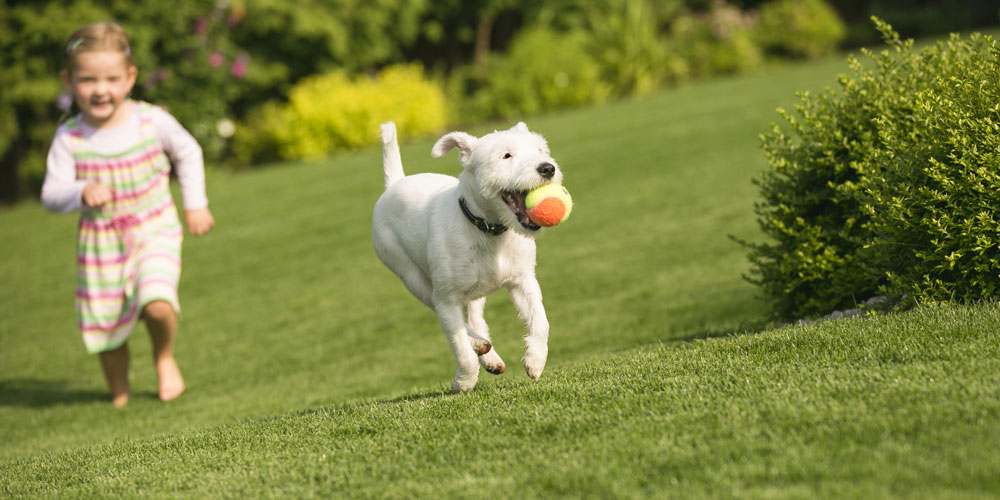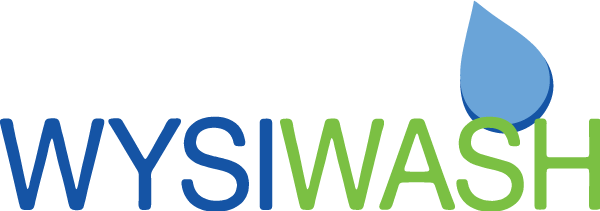Benefits of Artificial Turf for Dogs (and Their Humans)

Imagine a world where your lawn is free of dead grass, yellow spots and holes. Pests and allergens are a thing of the past and your interior is devoid of the stains that come from dirty paws. If you own a dog—or work with them—this scenario may sound like a dream but, for many that have decided to replace their lawn with artificial turf, it is an absolute reality.
For dog owners and those in the dog care industry, artificial grass can represent a safe, sustainable way to preserve the look of your lawn, reduce maintenance, and save you thousands of dollars in the process.
We wrote this article with the goal of answering some of the more common “fake grass" related questions. If you have been considering a synthetic lawn we hope to give you the basics on how to choose, install, and maintain a pet-friendly artificial turf so you can start spending more time with your dogs, and less time cleaning up after them.
What's Artificial Turf Made of?
The actual “blade of grass" is typically made up of polyethylene, the same type of plastic found in water bottles, dog bowls, and plastic bags. These blades of grass are then sewn into a backing layer—which is often made from the same, or similar, material—that provides the turf with an added layer of support and durability.
The grass and backing are installed over a base that provides shock absorption and drainage and, finally, sand and rubber granules are distributed over the grass to add weight and to create additional softening.
For a more in-depth explanation, check out this “How It's Made" video by the Discovery Channel.
Is Synthetic Grass Safe for Dogs?
Since the inception of fake grass, pundits have voiced concerns over the exposure to chemicals used in it’s creation and, while the safety has been called into question many times, most experts seem to agree that synthetic turf does not pose any more risk than that of any other field.
We must add the caveat though that this is an ongoing debate with proponents on both sides and while we cannot advise you either way, we recommend and encourage you to follow the EPA's ongoing research in making your decision to choose artificial turf.
That said, artificial turf does provide a few safety benefits that you may not have considered. For instance, because you will no longer need to free your lawn of pests or weeds the need for additional chemicals will largely be removed. This topic is another that is heavily debated but it is generally agreed upon that exposure to certain pesticides and herbicides can be linked to various types of cancer. Removing these chemicals from your landscape could prove to be very beneficial to your wellbeing and to that of your four legged friends.
Benefits of Artificial Turf for Dogs
Quality synthetic grass products are built to keep their natural green color for decades. In addition to being resistant to snow, rain, dog waste, and normal wear and tear most artificial turfs feature built-in U.V. inhibitors. This means that they will hold their color even in the most hot and sunny conditions.
Synthetic lawns don’t need to be mowed or weeded to maintain curb appeal—which means you save time and money. Artificial turf requires no irrigation or rainfall to keep them healthy. In fact, once they are installed there is very little you have to do to maintain them with the exception of the occasional cleaning.
As anyone with a canine and natural grass knows, dogs love to play “ruff”. Activities like scratching and digging create dead spots in the lawn, walking hazards, and worse yet—dirty paws! These concerns are all but eliminated when you install a synthetic lawn. Your dogs will learn quickly that they can’t tear up the yard and will quickly find other outlets for their energy. You’ll enjoy the peace and sanity that comes with not having to fix holes or clean up the aftermath of your best friends excitement (can’t put a price on that).
One of the most unexpected benefits of synthetic turf that owners report is the reduction of pests and allergens. Let’s face it, there is a world of biting, itching, parasitic creatures living right out your door and they love your dog. When your pooch comes inside, fleas and ticks often hitch a ride. Artificial turf destroys the habitat of fleas and ticks, and drastically reduces their numbers.
If your vet has told you that your dog an allergy to “some kind of grass,” then artificial turf can relieve your pup’s itchy, red, belly and paws. Without the allergens that grass brings, your dog can spend more time outside—and less time wearing the cone of shame.
Lastly, synthetic lawns make cleanup easy. Most people unfamiliar with artificial turf cringe at the idea of their dogs using the bathroom on a piece of plastic. While this may be a little off putting, artificial turf can actually be easier to maintain in the long run. No longer do you have to worry about excess nitrogen from urine or feces creating spots in your lawn or missed ‘landmines’ hiding in uncut grass. With the right artificial lawn cleaning product, clean up is quick and painless and odors are effectively eliminated.
Questions to Ask Your Turf Dealer Before Installing
A few of the most important points when selecting artificial grass for your pets are:
- How reputable is the company?
- What kind of reviews do they have online?
- How long have they been in business?
- Do they offer specific products for pets?
- Do they offer installation in your area?
- Is the the product made from a polyethylene or polypropylene material? These are the best materials for pets, nylon is often too porous.
- Does the turf have pet-friendly features? An easily draining backing or impregnated antimicrobial agents can go a long way in neutralizing odors and reducing toxins.
If you’re curious about the installation process or are interested in DIY, check out this video from syntheticgrasswarehouse.com
How Do I Maintain My Artificial Turf?
By replacing your grass you may have freed yourself from the shackles of sprinkler and lawn mower, but that doesn’t mean your responsibilities are over.
Like any outdoor area, your synthetic turf may need to be raked or brushed off from time to time as leaves and other debris settle on it. As a pro-tip we recommend buying a cordless blower as this will cut down your clean up time significantly.
Assuming your synthetic lawn will be used primarily by your furry friends, we recommend some special attention when they “do their business.” Here are a few tips to keep your lawn safe and odor free:
- Artificial turf and dog feces:
- Once solid waste has dried, remove as you normally would, and rinse the area. If the waste is loose, remove and spot treat with a disinfecting cleanser, such as Effersan.
- Artificial turf and dog urine:
- With liquid waste, it is best to assume your dogs are using the entire area. Oftentimes it may be hard to see where they last went “potty” and ignoring it for too long may allow certain toxins to form.
- This is where the Wysiwash Sanitizing System shines. Simply attach the Wysiwash Sanitizer-V to any standard garden hose and evenly disinfect the entire turf area. With Wysiwash, sanitizing your pet turf is as simple as hosing it down.
When thinking about cleaning artificial turf, especially pet friendly artificial turf, it’s important to stay away from cleaners containing harsh chemicals, alcohol, or acids which can cause damage and deterioration to the compounds that make up your turf, not to mention the effect they have on your four legged family members. Wysiwash is a mild, pet safe, eco-friendly sanitizing solution proven to be more effective than bleach or other harsh disinfectants.
Conclusion
Dead grass, holes in your lawn, ticks and fleas, excessive water bills, weekends spent maintaining your yard. If you work with dogs and have experienced any of these challenges, we hope this article offers a solution.
While artificial grass may not be the “perfect lawn”, it offers one of the best, most dog-friendly turf options for the homeowner or animal care professional.
Do you use Wysiwash on your artificial turf? What was your experience? We’d love to hear from you!
